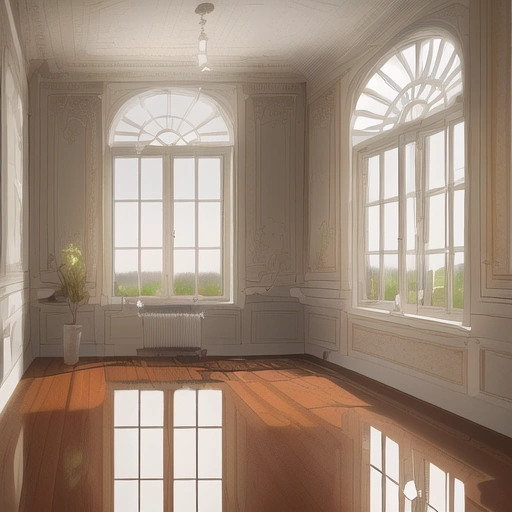Best Window Brands for Historic Home Restoration: A Preservationist’s Guide
The Art of Preservation: Selecting Windows for Historic Homes
Historic home restoration is a delicate dance between preserving the past and embracing the present. Windows, often described as the eyes of a home, play a crucial role in this process, offering glimpses into history while framing the lives within. They contribute significantly to the architectural character, energy efficiency, and overall comfort of a historic dwelling. Selecting the right window brand for a restoration project, therefore, transcends mere aesthetics; it requires a deep understanding of historical accuracy, material durability, and modern performance standards.
This article delves into the leading window brands that offer solutions tailored to the unique demands of historic home restoration, providing insights for homeowners, preservationists, and architects alike. The challenge lies in finding windows that not only replicate the look and feel of the original fenestration but also meet contemporary energy efficiency standards. For example, replacing single-pane windows with modern, energy-efficient windows can dramatically reduce heating and cooling costs, contributing to long-term savings and a smaller carbon footprint.
However, simply installing any modern window can detract from the home’s historical integrity. Preservation guidelines often dictate specific requirements for window design, materials, and operation, making the selection process complex. Understanding these guidelines and finding window brands that can meet these requirements is paramount for a successful historic home restoration project. Moreover, the choice of window material is a critical decision point. While wood windows are often favored for their historical authenticity, they require regular maintenance to prevent rot and insect damage. Clad-wood windows offer a compelling alternative, providing the aesthetic appeal of wood interiors with the durability and weather resistance of an exterior cladding, such as aluminum or fiberglass. These options balance historical accuracy with long-term performance, reducing the need for frequent repairs and replacements. Ultimately, the best window brand and material will depend on the specific architectural style of the home, the local climate, and the homeowner’s priorities regarding aesthetics, energy efficiency, and maintenance.
Blending Historical Accuracy with Modern Energy Efficiency
One of the primary challenges in historic window restoration is maintaining the original aesthetic integrity of the building while simultaneously improving its energy efficiency. Older, historic windows, often single-pane, are notorious for their poor insulation, contributing significantly to energy loss and higher utility bills. This presents a unique dilemma: how to preserve the character-defining features of historic windows while meeting modern energy performance standards. Fortunately, several window brands specialize in providing solutions that bridge this gap.
Brands like Marvin and Andersen offer custom window solutions meticulously designed to replicate historical profiles and architectural details, all while incorporating energy-efficient glass and advanced construction techniques. For instance, Marvin’s Ultimate line allows for custom shapes, sizes, and divided light patterns, ensuring a seamless blend with the existing architecture. Andersen’s A-Series windows are also a popular choice, offering a range of historical styles and energy-efficient options, making them suitable for various historic home restoration projects.
These options allow homeowners to achieve significant energy savings without sacrificing the historical accuracy of their homes. Energy-efficient windows in historic home restoration projects often utilize features like insulated glazing units (IGUs) with low-E coatings and inert gas fills, such as argon or krypton. These technologies dramatically reduce heat transfer through the window, improving its U-factor (a measure of thermal transmittance) and solar heat gain coefficient (SHGC). For example, a single-pane window might have a U-factor of 1.0 or higher, while a modern, energy-efficient window can achieve a U-factor of 0.30 or lower.
Similarly, low-E coatings selectively block certain wavelengths of solar radiation, reducing heat gain in the summer and heat loss in the winter. When selecting energy-efficient windows for historic properties, it’s crucial to balance energy performance with aesthetic considerations, ensuring that the window’s appearance aligns with the building’s historical character and preservation guidelines. Furthermore, the choice of frame material also plays a crucial role in both aesthetics and energy efficiency. While wood windows are often favored for their historical accuracy, they require regular maintenance to prevent rot and decay.
Clad-wood windows offer a compelling alternative, combining the aesthetic appeal of a wood interior with the durability and low-maintenance benefits of an exterior cladding material like aluminum or fiberglass. These clad-wood options provide excellent thermal performance and resistance to the elements, making them a practical choice for historic home restoration projects in various climates. Ultimately, selecting the right window requires a careful assessment of the building’s historical significance, energy efficiency goals, and long-term maintenance requirements, ensuring a harmonious blend of preservation and performance.
Material Matters: Wood, Clad-Wood, and Alternative Options
The choice of window material is another critical factor in historic home restoration, demanding a careful balance between historical accuracy, long-term performance, and energy efficiency. Wood windows, celebrated for their authentic appearance and historical appropriateness, require significant maintenance and are susceptible to rot, insect damage, and the effects of moisture. This can lead to ongoing expenses and preservation challenges, especially in regions with harsh climates. Traditionalists often favor wood for its ability to be easily repaired and replicated, aligning with strict preservation guidelines.
However, the long-term costs associated with maintaining wood windows must be carefully weighed against the benefits of other materials. Alternatives like clad-wood windows offer the aesthetic appeal of wood on the interior, preserving the historical character of the home’s interior spaces, while providing enhanced durability and reduced maintenance on the exterior. These windows feature a wood interior with an exterior cladding of aluminum or fiberglass, protecting the wood from the elements. Aluminum cladding is known for its strength and resistance to corrosion, while fiberglass offers exceptional stability and resistance to warping and cracking.
This combination of materials provides a durable and energy-efficient window solution that requires less frequent painting and repairs, making it an attractive option for homeowners seeking to balance historical accuracy with modern performance. Brands like Pella and Kolbe offer excellent clad-wood options that combine historical aesthetics with modern performance. Pella’s Architect Series, for example, provides a wide range of customization options, allowing homeowners to replicate the look of historic windows with durable aluminum exterior cladding.
These windows can be tailored to match specific historical profiles and details, ensuring a seamless integration with the existing architecture. Kolbe’s Forgent Series, on the other hand, offers fiberglass windows that mimic the look of wood with exceptional strength, energy efficiency, and longevity. Fiberglass is highly resistant to expansion and contraction, making it an ideal material for historic window replacement in climates with extreme temperature fluctuations. These advanced window materials contribute significantly to improving the energy efficiency of historic homes, reducing energy consumption and lowering utility bills without compromising the building’s historical integrity. Careful selection of window materials is paramount to successful historic home restoration projects.
Replacement Strategies: Navigating Preservation Guidelines
In some cases, complete window replacement becomes the only viable option due to extensive damage, rot, or irreparable deterioration. However, replacing windows in a historic home is rarely a straightforward decision, demanding meticulous adherence to preservation guidelines and stringent local regulations. These regulations often dictate acceptable materials, dimensions, and even the method of installation to ensure the historical integrity of the building is maintained. The National Park Service (NPS) provides comprehensive guidance on window replacement in historic buildings, underscoring the critical importance of preserving original window openings, replicating historical profiles, and respecting the architectural context.
Ignoring these guidelines can result in costly rework, fines, or even legal challenges, particularly in designated historic districts. Therefore, a thorough understanding of applicable regulations is paramount before commencing any window replacement project. Navigating these preservation guidelines often involves a delicate balancing act between historical accuracy and modern performance. For instance, while single-pane wood windows might be historically accurate, they offer minimal energy efficiency compared to modern double- or triple-pane options. This is where specialized window brands like Sierra Pacific Windows excel.
They offer custom wood windows meticulously crafted to meet stringent historical preservation standards while incorporating energy-efficient glazing and weather-stripping technologies. These windows are frequently specified for landmark buildings and projects within historic districts, providing a seamless blend of authenticity and performance. Selecting such brands can streamline the approval process with local preservation boards, as they demonstrate a commitment to both historical accuracy and energy efficiency. The use of energy-efficient windows can significantly reduce heating and cooling costs, contributing to the long-term sustainability of the historic home.
Beyond aesthetics and energy performance, the durability of replacement windows is a critical consideration. Historic windows often lasted for a century or more, and while modern windows may not be expected to endure quite as long, they should still offer decades of reliable performance. Factors such as the quality of the wood, the type of cladding (if any), and the hardware used all contribute to the overall lifespan of the window. Investing in high-quality window materials and construction techniques is essential to minimize future maintenance and replacement costs. Furthermore, consider the availability of replacement parts and the manufacturer’s warranty. Choosing window brands known for their commitment to quality and longevity will ensure that your window replacement project not only meets preservation guidelines but also provides lasting value for your historic home. Clad-wood windows, for example, offer a balance of traditional aesthetics and enhanced weather resistance, reducing the risk of rot and decay.
Durability and Longevity: Choosing Windows That Last
Beyond aesthetics and energy efficiency, durability and longevity are crucial considerations for historic window restoration. Windows in historic homes are often exposed to the elements for decades, making it essential to choose materials and construction techniques that can withstand the test of time. Brands like Loewen Windows offer exceptional durability and weather resistance, using high-quality materials and meticulous craftsmanship. Their Douglas Fir windows are known for their strength and stability, making them a popular choice for coastal regions and other demanding environments.
Similarly, Dynamic Windows & Doors specializes in high-performance windows designed to withstand extreme weather conditions. For homeowners prioritizing long-term value in their historic window replacement projects, these brands represent a worthwhile investment. When evaluating window durability for historic home restoration, consider the specific environmental challenges the windows will face. In coastal areas, salt spray and high winds demand windows with superior corrosion resistance and structural integrity. Wood windows, while historically accurate, can be particularly vulnerable in these environments if not properly treated and maintained.
Clad-wood windows, with their protective exterior layer of aluminum or fiberglass, offer a robust alternative, shielding the wood core from moisture and pests. Selecting window materials that can withstand these regional stressors is crucial for ensuring the longevity of your historic windows and minimizing future maintenance costs. Investing in high-quality, durable windows upfront can significantly reduce the need for frequent repairs or replacements, ultimately preserving the historic fabric of the home. Furthermore, the construction techniques employed by window manufacturers play a pivotal role in determining window durability.
Look for window brands that utilize mortise-and-tenon joinery, a traditional woodworking method known for its exceptional strength and stability. This type of joinery creates a tight, interlocking connection between window components, minimizing the risk of warping or separation over time. In addition, consider windows with multi-point locking systems, which provide a tighter seal against air and water infiltration, further enhancing energy efficiency and protecting the window from the elements. By prioritizing windows with robust construction techniques, homeowners can ensure that their historic windows will not only maintain their aesthetic appeal but also provide reliable performance for generations to come.
These features are particularly important when striving for energy-efficient windows that also meet historic preservation guidelines. Finally, it’s important to investigate the warranty offered by the window manufacturer. A comprehensive warranty is a testament to the manufacturer’s confidence in the durability and longevity of their product. Look for warranties that cover both material defects and workmanship, and be sure to understand the terms and conditions of the warranty before making a purchase. A strong warranty provides peace of mind and protects your investment in historic window replacement, ensuring that you are covered in the event of unexpected issues. Moreover, consider the availability of replacement parts for the window model you choose. Opting for window brands with a proven track record of providing replacement components will greatly simplify future repairs and maintenance, helping to prolong the life of your historic windows.
Preserving the Past, Embracing the Future: The Final Verdict
Selecting the right window brand for a historic home restoration project is a multifaceted decision, demanding a careful equilibrium between historical accuracy, energy efficiency, material durability, and adherence to preservation guidelines. The ideal choice reflects a commitment to honoring the architectural integrity of the past while simultaneously integrating modern performance standards. For instance, when addressing energy efficiency in historic homes, opting for energy-efficient windows with features like low-E coatings and insulated glazing can significantly reduce energy consumption without compromising the historical aesthetic.
By meticulously evaluating the offerings from leading window manufacturers such as Marvin, Andersen, Pella, Kolbe, Sierra Pacific, Loewen, and Dynamic, homeowners and preservationists can ensure that their restoration projects not only respect the past but also embrace a more sustainable future. This thoughtful selection process is paramount to a successful historic home restoration. One crucial aspect often overlooked is the long-term financial implications of window choices. While the initial investment in high-quality, historically accurate window replacement might seem substantial, the return on investment manifests in several ways.
Improved energy efficiency translates to lower heating and cooling costs, potentially saving homeowners hundreds or even thousands of dollars annually. Furthermore, durable, well-maintained windows enhance the property’s value, making it a more attractive asset in the long run. Consider, for example, the difference between standard vinyl replacement windows and custom-made wood windows that replicate the original designs; the latter, while more expensive upfront, adds significantly more value and authenticity to a historic property, appealing to discerning buyers who appreciate historical preservation.
Careful consideration of window materials and brands is essential to maximizing the value of any historic home restoration. Navigating the complexities of historic preservation guidelines is another critical element in the window selection process. Many historic districts and landmarked properties are subject to strict regulations regarding window replacement, often requiring adherence to specific design details, materials, and installation methods. The National Park Service’s guidelines, for example, provide detailed recommendations on preserving historic windows, emphasizing repair over replacement whenever feasible.
When replacement is necessary, these guidelines advocate for windows that closely match the original in terms of size, shape, style, and materials. Failing to comply with these regulations can result in costly fines and delays, highlighting the importance of working with window brands and contractors experienced in historic home restoration and knowledgeable about local preservation requirements. Choosing the right window replacement strategy can ensure compliance with local regulations. Investing in windows that meet these standards not only enhances the beauty and comfort of a historic home but also contributes to its long-term preservation, value, and compliance with historic preservation standards.


